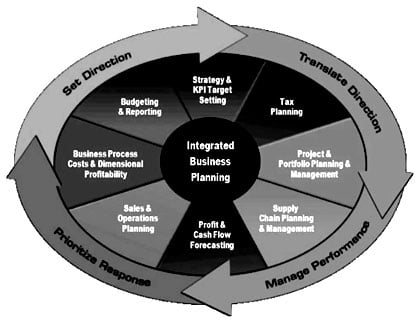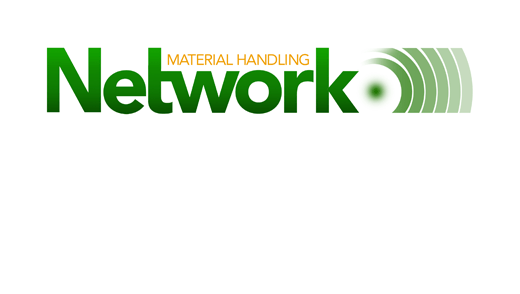Published January 17, 2017
In Part I of this series we discussed the culture, values, and expectations from best in class planning. We concluded that planning encompasses all of the best thinking at the time the plan is created to develop a roadmap for organizational alignment. When planning is at its best, the team aligns around a common value vision to help navigate uncertainty.
In Part II we will dig into the different forms of planning. This is intended to help you recognize the various aspects of the planning process and how they should all tie together to complete a comprehensive business plan. While this list is exhaustive, it is important to recognize that the nature of your business may not require every planning form.
Peter Drucker, the inventor of management by objectives and self control once said, “Unless commitment is made, there are only promises and hopes; but no plans.” How many times have you “gone through the motions” and failed to buy-in and commit to the plan? Planning is a process that can align the team and define the values of success. Are you using planning to your advantage?
|
“Unless commitment is made, there are only promises and hopes; but no plans.” |
 |
What are the types of planning?
Business planning is a commonly used term to cover the creation of a cost and output vision for each team. It is most commonly called the annual plan and is reduced to a headcount recap, projects list, and any capital needs. With so much potential, many businesses squander the opportunity to engage in meaningful dialogue with their teams on long term objectives/goals.

Figure 1: Integrated Business Planning Coordinates All Critical Activities in Planning
- Integrated Business Planning (IBP)
The most holistic of the planning processes, this process is often driven by the CEO and requires all members to align around strategic objectives of the business. This process helps define the strategic vision for the business and is used to describe the long term (24-36 month) strategic process.
This term can also be used to describe a medium term (6-12 month) process for collecting all project activities into a single plan to understanding the required interrelationships, predecessor requirements, and alignment requirements. Under this definition, the plan serves to ensure all activities are harmonized to deliver on a desired medium term project objective.
- Sales Planning
The sales/merchandising teams are expected to have a clear feel for the marketplace to anticipate shifts in tastes. They are most effective when they read the customers desires and can move the market to offerings that meet these interests. As a result, sale planning often plans medium and long term (6-18 month) objectives for new product entry, old product discontinuation, and shifts in consumer appetite.
Many businesses intertwine the concepts of assortment planning, customer relationship marketing, and marketing planning with sales planning. The goals of these processes are to recognize the true business customer, their interests, competitive gaps, and align your inventory/selection resource for differentiation.
- Sales and Operations Planning (S&OP)
This process by design is reactive and intended to align sales goals (1 week to 18 months) with known supply gaps. It provides a forum for the business to work through, identifying gaps in the defined strategy with known short term issues and resolve them collectively to optimize the business.
The concepts of inventory planning, supplier score carding, and cross selling management are topics managed under this process. As a reactive process, the team is managing gaps in product supply to maximize inventory opportunities to enhance sales. Performed to perfection, this process aims to curb customer appetite to inventory depth.
The following list of plans would be used in facilitating the S&OP process:
- Demand Planning
This data rich process is intended to consume the customer/sight level sales by product to develop a medium (1 month to 12 month) view of consumption. By design, it works at a very low level and aligns the business around true customer preferences. It helps provide a critical insight and foundation for future product positioning.
Event management, out-of-stock management, and demand shifts are all managed under this process. This approach is designed to remove historical bias from the planning process and allow scientific forecasting processes to ferret out trends to better recognize movements/shifts in demand. It is not intended as a process enabled by a “black box” but rather a process that unleashes science and math in a way working on each item one at a time could never complete.
- Supply Planning
This process consumes known purchase orders and planned future demand to highlight gaps in supply allowing new orders to be created. These orders may be internally to manufacturing or externally to vendor where the supply conversation can begin to define vendor short comings. The output of this process provides short (1 month – 6 months depending on product lead times) and medium term (3 months to 18 month) inputs to the above processes.
Bill of Material (BOM) management, Enterprise Resource Planning (ERP) enablement, lead time management, and vendor management are introduced to understand the factors impacting the availability of supply. Facilities (e.g. manufacturing, DC, and stores) are over burdened with costs when supply management is poor.
- Operations Planning
As plans materialize, the strategic vision of the business is reduced to operational plans (1 month to 12 months) that execute the vision. These plans come in many forms (e.g. DC operational plans, store personnel plans, etc.) that align resources to meet the short term revenue objectives. Many times, these teams fail to see and/or understand the long term vision of the business and as a result make decisions in a vacuum that may be a direct contradiction to the long term vision of the business.
DC staff planning, sales associate scheduling, temporary staff planning, and hiring plans are often considered in this process. Throughput and performance metrics are often used to derive the tactical personnel needs of the business.
- Collaborative Planning and Forecasting Replenishment (CPFR)
Designed as a critical interface between a vendor and their customer, this process reinforces a collective dialogue between the two parties to manage supply and sales. It works best when each player has clear visibility to demand (internally and the marketplace) to anticipate needs. This process is the equivalent of the IBP as described above, but enabled by a lot of data and managed between a vendor and their customer (1 month to 6 months).
Topics like in-stock management, product sell through, shelf space management, and consignment management are typically managed in this process. Many times, CPFR is used when a vendor consigns inventory to a customer/retailer and both parties are working to maximize product profitability.
- Replenishment/Staff Planning
The most tactical in the planning processes, is day to day (1 to 7 days) management of the business to provide a holistic product assortment and/or staff the location to meet the customer interface needs. This process ensures the business is ready to “perform business.” As a result, individual item orders at a store level and the staff plans to manage customer needs result from this process.
At a location level, day to day schedules are managed based on actual requirements to adjust to changing daily conditions.
- Demand Planning
- Budgets
Anyone in business understands this lowest level of planning. From the above processes, teams are provided budgets for spending (1 month, 3 months, and annually) that they must manage to reach the planning profits. Teams manage these short term plans to minimize risks to expenses which adversely impact the planned profitability. This process typically requires a monthly read-out to explain gaps to plan and provide a forecast of future requirements and expectations.
Payroll (regular and overtime), expenses, and project costs are reviewed to ensure the team is delivering on its operational, tactical, and financial “promise” to the business. The following processes support and extend the importance of the budgeting process.
- Cash Flow Planning
Managing the disbursement of cash is the life blood of a business. Ensuring the business has the right working capital to pay creditors/vendors ensures you get the best credit terms and minimize financing charges. This short (1 to 3 months) and medium (6 months to 12 months) process is critical to ensuring a business’s existence/survival.
- Creditor Planning
Every business relies on creditors to help “fund” the business assets. Managing your lender community ensures you have long term (6 month to 18 months) strategic partners to minimize costs and fund working asset investment. Churn in this community can undermine the rest of the planning processes and bring uncertainty to the business for little added value.
- Cash Flow Planning
- Investor/Shareholder Planning
Owners of the business set the long term (12 month to 36 month) requirements of the business. They provide the insight and perspective to guide business management initiatives. Without their unbiased assessment of the business, teams fall into “group think” where comfort and consistency rules the day.
Strategic initiatives, competitive positioning, game changer innovation, and the next big offering are discussed in this process. This process helps solidify the right vision to ensure the business has a path for growth and competitiveness. Skipping this critical process leaves a business without a rudder and will result in a slow, but steady decline in their market stature.
Done successfully, all levels of planning can be used to create an effective discussion with teams to align on strategic objectives. If your planning does not include all of the above elements, you are not allowing the entire business to engage in managing the business. All too often teams work in operational silos and they optimize their own process without regard to the impact to their process on their partner up/down stream from them.
Are you a visionary? If not, do you align with others on the team who have this strength during planning time?
Conclusion
To plan or not to plan, is there a question? Creating a clear roadmap and value guideposts to operate from provides a powerful springboard for a business. Plans provide the grounding and specificity to empower teams and processes.
What are your strategic objectives? Does your team have clarity on their role and how it will evolve over time? Can the lowest level recite your mission and things they are to do to make the business a better place?
|
“Someone’s sitting in the shade today because someone planted a tree a long time ago.” |
 |


